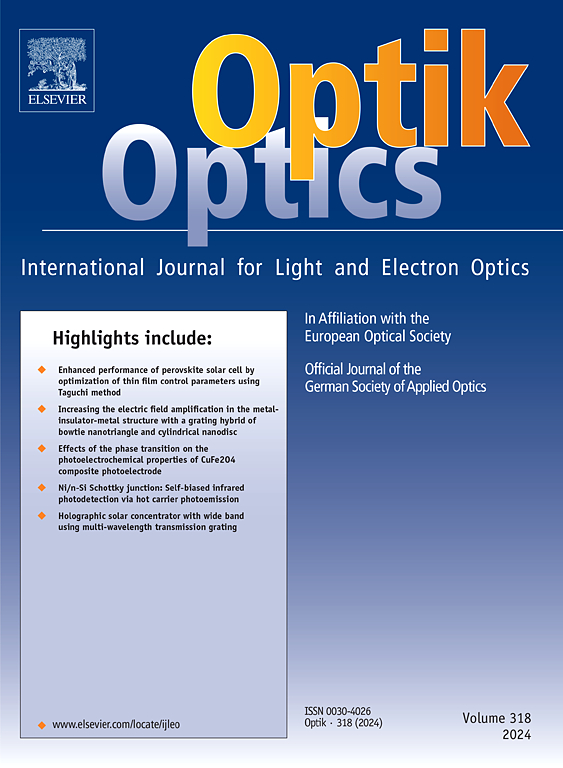Analysis on nanoparticles induced alignment stability of dye doped liquid crystal at varying temperatures
IF 3.1
3区 物理与天体物理
Q2 Engineering
引用次数: 0
Abstract
In this paper, an analysis on the stability of zinc oxide (ZnO) nanoparticles (NPs) induced homeotropic alignment (HA) of dichroic dye doped nematic liquid crystal (NLC) at varying temperatures has been carried out. Three sample cells, namely conventional PI coated homeotropically aligned liquid crystal (HALC) (S1), NPs induced HALC (S2), and dye doped NPs induced HALC (S3) were prepared. Further, their morphological and electro-optical (E-O) characteristics were determined between temperature ranges from 20 °C to 60 °C. Findings illustrate that there are no observable textural changes in terms of background consistency, phase transitions, and uniformity in coloration across all the cells. Also, with increasing electric field, the liquid crystal (LC) molecules exhibit uniform switching behavior up to 60 °C, confirming that the performance of the HALC device remains unaffected under elevated thermal conditions. Comparatively, cell S1 shows larger threshold and operating voltages, whereas cell S3 exhibits the most thermally stable alignment with low threshold and operating voltages with highest contrast ratio (CR) at all temperatures. Thus, NPs induced dichroic dye doped HALC cells have potential to contribute to the development of thermally reliable LC based devices.
纳米颗粒诱导染料掺杂液晶在不同温度下的排列稳定性分析
本文研究了氧化锌纳米颗粒(NPs)诱导二向色染料掺杂向列相液晶(NLC)在不同温度下的稳定性。制备了三种样品细胞,即传统PI包被的同向取向液晶(HALC) (S1)、NPs诱导的HALC (S2)和染料掺杂NPs诱导的HALC (S3)。此外,在20°C至60°C的温度范围内测定了它们的形态和电光(E-O)特性。研究结果表明,在所有细胞的背景一致性、相变和颜色均匀性方面,没有可观察到的纹理变化。此外,随着电场的增加,液晶(LC)分子在高达60°C时表现出均匀的开关行为,这证实了在高温条件下,HALC器件的性能不受影响。相比之下,电池S1表现出较大的阈值和工作电压,而电池S3表现出最热稳定的排列,在所有温度下具有低阈值和最高对比度(CR)的工作电压。因此,NPs诱导的二向色染料掺杂的HALC电池有潜力为热可靠的LC基器件的发展做出贡献。
本文章由计算机程序翻译,如有差异,请以英文原文为准。
求助全文
约1分钟内获得全文
求助全文
来源期刊

Optik
物理-光学
CiteScore
6.90
自引率
12.90%
发文量
1471
审稿时长
46 days
期刊介绍:
Optik publishes articles on all subjects related to light and electron optics and offers a survey on the state of research and technical development within the following fields:
Optics:
-Optics design, geometrical and beam optics, wave optics-
Optical and micro-optical components, diffractive optics, devices and systems-
Photoelectric and optoelectronic devices-
Optical properties of materials, nonlinear optics, wave propagation and transmission in homogeneous and inhomogeneous materials-
Information optics, image formation and processing, holographic techniques, microscopes and spectrometer techniques, and image analysis-
Optical testing and measuring techniques-
Optical communication and computing-
Physiological optics-
As well as other related topics.
 求助内容:
求助内容: 应助结果提醒方式:
应助结果提醒方式:


